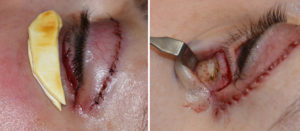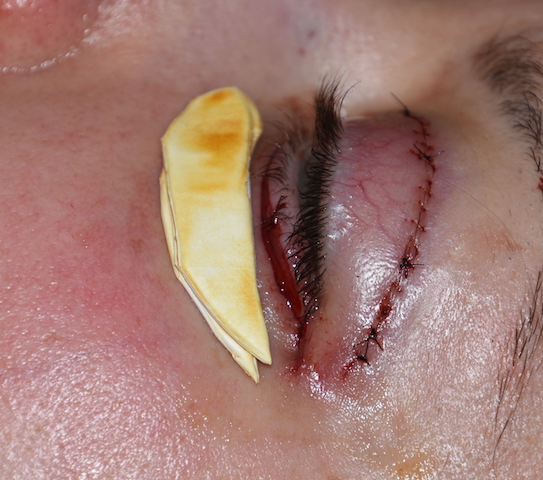The treatment of undereye hollows is most commonly done by injection techniques. Using synthetic fillers and autologous fat, adding volume to the deficient infraorbital rim by injection offer an immediate voluminizing effect in a non-surgical manner. When effective these injections are very treatments even if their volume effects are not maintained long-term.
But the infraorbital area (lower eyelid and lower eyelid-cheek transition) is one of the most aesthetic problematic areas in the face to treat by injection in my experience. The lower eyelid tissues are thin, particularly as they cross over the infraorbital rim, and are very intolerant of anything less than a near perfect contour of added volume. Irregularities are not uncommon at all, and while injectable fillers may be a self-solving problem, such is not the case with injected fat.
The surgical approach to infraorbital hollows is to directly add a material (implant) to the rim itself. While surgical this provides a permanent effect and directly treats what is often the real problem…infraorbital bone recession/deficiency. The ideal implant to use is that of a custom implant approach being made individually for the patient’s specific anatomy from their 3D CT scan. While this is the ideal approach for some patients this is not an option due to cost or the magnitude of their deformity does not justify the effort.
One implant material that is very versatile and a god choice for the infraorbital rim is ePTFE. (expanded PolyTetraFluoroEthylene, also historically known as Gore-tex) This material comes in sheets of 1 and 2mm thicknesses which allows it to be easily cut, shaped and molded to any surface contour. Because edging of any implant is so important in any implant placed below thin tissues, ePTFE can be crimped so that it has a feathered edge. To optimize adaptation to the bony rim I always place a few microscrews for firm fixation.

ePTFE is a well known facial implant material that has been around for decades. It is extremely well tolerated and its microfibrillar surface structure allows for actual tissue adherence. But this tissue adherence is not so great the its removal should that be necessary is overly difficult.
For the complex contours of the orbital rim a custom design implant is always the best approach regardless of the material used to create it. But if it is necessary to use an intraoperatively shaped implant material, ePTFE offers a versatile option that can be shaped and contoured as needed.
Dr. Barry Eppley
Indianapolis, Indiana



